I don't believe Sleazy for a minute when, in interviews, he calls Love's Secret Domain a "positive" recording. After making Horse Rotorvator, sounding more positive was probably as easy as finding something softer than a hammer. If there is a positive thread running through Coil's third full-length, songs like "Things Happen" and "Titan Arch" dye it black; if anything purely positive is left over, "Further Back and Faster" and "Chaostrophy" obliterate it entirely. I've been listening to L.S.D. for 15 years now, and I'm convinced that it is Coil's most beguiling record, a fun-house mirror that warps and subverts everything held up to it. Calling it their acid album is just insulting, because there's much more to it than the drugs that helped spawn it.
- Administrator
- Albums and Singles
The new CD edition of ‘Wounded Galaxies Tap at The Window’ is now available from the Cyclobe shop. It comes in a full colour deluxe laminated wallet containing a fold-out poster with artwork by Alex Rose. A new film is available for view at the Cyclobe site as well.
CYCLOBE
WOUNDED GALAXIES TAP AT THE WINDOW
Compact Disc
25th July, 2011

The new CD edition of ‘Wounded Galaxies Tap at The Window’ is now available from the Cyclobe shop. It comes in a full colour deluxe laminated wallet containing a fold-out poster with artwork by Alex Rose.
Read More
- Administrator
- Albums and Singles
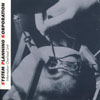
While they might not be as lauded as their contemporaries, at least in relative terms, the Graeme Revell fronted SPK was one of the essential contributors to "industrial" music, as well as the various permutations of it that came afterward. This, their debut full-length album, carefully balances the abrasive harshness, but also hints of moody, depressive ambience that would define their future.
Side Effects/Mute
SPK has always been, at least to me, one of the "big three" innovators in early industrial music, alongside Throbbing Gristle and Cabaret Voltaire.However, they always seem to be considered third on that list, and I can’t completely understand why.Perhaps it was because, even at the time, they were one of the more "extreme" practitioners of the genre.Early work, especially Information Overload Unit, was more on the noisy end of the spectrum than the harsher TG stuff, so that may have marginalized them somewhat.Imagery-wise even they leaned towards the more disgusting and confrontational, using autopsy images throughout their work and a skewered penis on the Meat Processing Section single, which definitely out-grossed TG and CV.Or perhaps it was because their transition to more conventional music was more abrupt (and seemingly more forced) then their contemporaries.
Throbbing Gristle broke apart before they had a chance to fully embrace more commercial sounds, and Cabaret Voltaire kept their paranoid, creepy edge when they started adding in danceable beats and actual singing.SPK, on the other hand, went drastically commercial with 1984's Machine Age Voodoo, keeping only the occasional bit of metal percussion from their early days.A recent revisiting of the album just screamed generic 1980s cheesy synth pop, a far cry from their innovative, experimental beginnings.
Information Overload Unit, released in 1980, remains their most aggressive and harsh album, matched only by the "Slogun" single. The original vinyl was split in half, with the "Ultra" A-side consisting of the manic, hostile pieces, while the "Hyper" side is the more bleak and depressive tracks, a sound they would perfect even more on the following Leichenschrei album.
The buzzing feedback and delay-drenched opening of "Emanation Machine R. Gie 1916" sets up the rest of the album perfectly, launching full on into what sounds like malfunctioning machinery crashing onto itself.Roars, feedback, and power tools mask a subtle, but perceptible rhythm undulating low in the mix that eventually is revealed as a rather simple, but effective analog drum machine loop beneath the chaos.
Aggression wise, "Emanation Machine" is matched only by "Berufsverbot," which closes the "Ultra" half of the album.Focusing more on junk metal percussion, it isn’t too far removed from a less theatrical, more hate-filled take on early Neubauten, complete with Revell's barked German vocals."Suture Obsession" brings in a bit of the squalling, damaged guitar sound that characterized their earliest, almost punk work, although tapes, synth noise and an almost buoyant bassline do their best to obscure it.
On the opposite side, "Ground Zero: Infinity Dose" somewhat bridges the two styles, as its pace is slow and plodding, but the sound is more harsh and aggressive.Rather than barked or screamed vocals, here they are processed beyond recognition, like the smallest piece of humanity left in a mechanized disaster.The remaining tracks tend to be more restrained, focusing a lot on slow, reverberated analog beats and the occasionally raw synth stab, especially on "Stammheim Tortukammer" and "Retard.""Epilept: Convulse" is the closest thing to an actual "song" on this album:a steady synthetic rhythm and noisy, but restrained electronic swells appear throughout, never pushing into the world of pure noise, but with a greater sense of structure and direction compared to the other tracks.
While SPK diversified their sound more after this album, Information Overload Unit remains probably their harshest and most dissonant work, without which I doubt the death industrial scenes of Cold Meat Industries and Tesco would exist.Although it definitely leans into formless noise, there is a rhythmic undercurrent that sets it apart and gives it its identity.Leichenschrei is a bit more fleshed out and fully realized in comparison, but this album is an important piece of their history, as well as the entire spectrum of dark and aggressive music.
samples:
 
Read More
- Administrator
- Albums and Singles
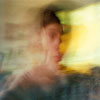
While he's spent much of this year designing and composing his Ante Algo Azul subscription series, Szczepanik has managed to also complete this full-length album, consisting of a single, beautiful piece of lingering ambience. Released on Christoph Heemann's Streamline label, it is a heartwrenchingly gorgeous piece of melancholy sound that is wonderfully unique and sounds like no one else.
The subscription series thus far seems like an ideal outlet to try new and diverse approaches to music, while this album is a culmination of a style he has essentially perfected.What he does best is composing emotional, expressive expanses of sound, conveying far more in the way of feeling and humanity than the genre is known for.
Drone is over-used to the point of almost being pejorative, so I'm hesitant to even mention it, but the genre’s staunch minimalism and attention to detail is definitely prevalent here, but it in the truly respectable classic sense.Drone does not have to be synonymous with lazy and repetitive, and here it most definitely is neither.Szczepanik works with natural, symphonic like rich tones, forceful and commanding, but not oppressive or heavy.
The disc opens with deep, resonating notes, slow and melodic, but also dynamic, constantly varying and shifting all throughout.Rather than the slow, often tedious build of similar artists, this disc just launches into the rich atmospheres.The album essentially feels like that heavily emotional, but beautiful and powerful moment of a great film stretched out for its 47 minute duration.
Throughout the piece, the sound builds up to dramatic crescendos before falling back to more pensive, quiet moments before reaching up again to even more dramatic heights, creating a cyclic, but still varying structure that continues throughout.The dramatic moments keep getting bigger and richer until there is essentially nowhere else to go, as the piece then comes to its pensive, funereal ending.
I've referred many times to the feeling and emotion that Please Stop Loving Me conveys throughout, and I must say that it is really a defining facet of the album, and also one that feels extremely subjective based on mood.During some listens it felt pained and agonizing, with a sense of loss that music rarely conveys.At other times it was much more glorious and uplifting, radiating a natural beauty that few albums can match.
Within that trite and generic "drone" label, I'd have to say that this is on par for me with the best Organum works, which is always a high water mark for me.There are very few albums like this that can remain enchanting with each and every listen, with new subtle elements to be heard.For such a relatively new artist, Szczepanik has the talents and ability of someone with a much larger discography, which makes this album all the more impressive.
samples:
 
Read More
- Administrator
- Albums and Singles
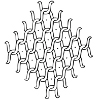 I have historically been quite fond of Barn Owl's work, but I sometimes find their extreme malleability a bit frustrating.  This collaboration with Ellen Fullman and Theresa Wong takes that trait a bit further than usual, as there is very little here that is immediately identifiable as "Barn Owl."  Perversely, though, that works just fine–in fact, all of the artists involved are almost completely and unrecognizably subsumed by the rich and vibrant drone music they've created.  This collaboration is so perfect and seamless that it sounds like a completely new band rather than the some of its parts.
I have historically been quite fond of Barn Owl's work, but I sometimes find their extreme malleability a bit frustrating.  This collaboration with Ellen Fullman and Theresa Wong takes that trait a bit further than usual, as there is very little here that is immediately identifiable as "Barn Owl."  Perversely, though, that works just fine–in fact, all of the artists involved are almost completely and unrecognizably subsumed by the rich and vibrant drone music they've created.  This collaboration is so perfect and seamless that it sounds like a completely new band rather than the some of its parts.
This is a reissue of a 2010 LP that vanished quite quickly.  The album takes its name from the Headlands Center for the Arts, where it was recorded.  That fact is notable because Ellen Fullman's massive self-invented Long String Instrument requires an entire large room and several days of set-up and tuning.  I suspect it is not very easy to arrange a collaboration with her.  Significantly, Wong (a cellist), Fullman, and Barn Owl are additionally joined by producer The Norman Conquest, who contributes some acoustic guitar and moaning wordless vocals.  That guy has been popping up on a lot of great albums lately.  In fact, he might actually be the most important single force in this entire collaboration: Headlands owes a lot of its success to his unusual production and mixing.
The most striking aspect of this release is that the various instruments rarely seem to have an audible attack–everything floats and drifts without any clear sounds of notes or chords being struck.  The second big thing is that all of the instruments bleed together, but not in a murky way…more in an "organic, amorphous, and edgeless wall of sound" way.  It is very difficult to tell which sounds are coming from which instruments or which performers, aside from those emanating from Fullman.  There is nothing that can be described as conventional or "rock" about Evan Caminiti and Jon Porras' guitar work–they must have either used EBows or just been especially masterful at harnessing feedback.  Wong, for her part, seems to just pick one note to slowly and somberly bow away at.  That should make for a dull or toothless album, but Fullman's dense and vibrant oscillations tend to make the simplest things seem compelling and alive.
A drone band could not possibly hope for a better anchor than Ellen and her Long String Instrument.  Barn Owl and Wong certainly manage to weave a beguilingly shimmering and undulating haze for almost forty minutes, but it is Ellen's massive buzzing strings that give its album its gravitas and heft.  Without that heavy omnipresent thrum, this album would be too vaporous to stand out much from the many other ambient drone albums pouring into the world.  The album's sole small weakness is that there isn't much to distinguish these pieces from each other aside from small details (i.e. someone is scraping a pick across the strings at the head of the guitar near the end of "The Light"), but they certainly combine to form a transfixing, egoless, and remarkably coherent whole.  I am not at all surprised that this is a great drone album, but I was definitely caught off-guard by how beautifully and intuitively this quintet cohered into a natural-sounding single entity. This stands with the best work of any of its participants.
Samples:
 
Read More
- Administrator
- Albums and Singles
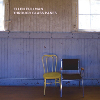 Fullman and her Long String Instrument have been quite active with collaborations, commissions, and residencies over the last few years, but this album is her debut full-length as a solo artist.  On one hand, that is quite remarkable, as she began working with her self-invented instrument of choice just about three decades ago.  On the other hand, the wait makes perfect sense, as the instrument's limited range and versatility make it a very difficult foundation to base an entire album upon.
Fullman and her Long String Instrument have been quite active with collaborations, commissions, and residencies over the last few years, but this album is her debut full-length as a solo artist.  On one hand, that is quite remarkable, as she began working with her self-invented instrument of choice just about three decades ago.  On the other hand, the wait makes perfect sense, as the instrument's limited range and versatility make it a very difficult foundation to base an entire album upon.
I'm sure that Ellen Fullman is not the first person to string wires across the entire length of a room (Alvin Lucier springs to mind), but her Long String Instrument is definitely unique in its complexity and scale: it features dozens of wires over 18 feet in length tuned in Just Intonation, an uncommon ratio-based tuning most famously used in LaMonte Young's epic "The Well-Tuned Piano."  Fullman's instrument also requires its own notation to "choreograph" its unusual playing technique (the performer walks slowly back and forth dragging their resin-covered fingers along the strings).  The overall effect is akin to a slow-motion raga being performed by a bunch of buzzing and humming power lines.  It's admittedly very impressive and unusual (probably much more so when experienced live, as the resonance of the performance space itself is a necessary part of the instrument), but it is also a very, very specific niche to be constrained to.
Wisely, Fullman only includes one completely pure Long String Instrument piece, the metallic and dissonant drone of "Event Locations No.2," which focuses on the beating created by uncomfortable harmonies.  The album's title piece also relies exclusively on the instrument, but Ellen percussively employs a "box bow" to achieve a strangely clipped autoharp effect.  My favorite pieces, however, are the two that involve other musicians, both of which were originally composed for Kronos Quartet and are very loosely based on Geeshie Wiley's timeless and singularly bleak "Last Kind Words Blues."  Normally, the idea of someone appropriating a simple, gut-level American Primitive classic for elaborate and expensive contemporary sound art would anger me, but Ellen's transfiguration is imaginative and unrecognizable enough to escape my wrath.
The sole significant difference between the two Wiley-based pieces ("Flowers" and "Never Gets Out of Me") is that one features mournful violins (and an interloping flock of sparrows) and one features a mournful cello.  Ellen went about composing the violin and cello parts quite similarly, taking selected segments of Geeshie's original melody and reconstructing them to mimic North Indian vocal music.  That approach is certainly fairly novel and effective, but a lot of the power stems from the simple fact that Fullman's heavily texture- and harmony-based music feels more complete with the addition of melody (and some new textures don't hurt either).  The trade-off, unfortunately, is that my ear is then drawn mostly to the melodic foreground.  That, lamentably, is Though Glass Panes' tragic flaw: the Long String Instrument is probably best used as an accompaniment rather than as a focal point (on album, anyway).  Ellen's artistry relies far too heavily on process, performance, and scale to reach its full potential on a recording.  Still, I was very much impressed by Through Glass Panes on a purely cerebral level: during its best moments, it certainly felt like Fullman was on the verge of warping both time and music into something uniquely her own.
Samples:
 
Read More
- Anthony D'Amico
- Albums and Singles
 This latest release from the long-running duo of Jonnine Standish and Nigel Yang is quite a bombshell, as Rhinestones was "inspired by a recent infatuation with 'eerie and gothic country music.'" To my ears, HTRK drawing inspiration from classic country heartache is already a winning formula right out of the gate, yet Rhinestones is even better than I might have hoped, as the Melbourne-based pair have spiced that new direction up further by filtering it through a "narcotic, nocturnal lens" in order to "map enigmatic badlands of strung out beauty" (count me in!). In less poetic terms, that means that Rhinestones is full of acoustic guitars, heartbreak, and half-sultry/half-ghostly vocal melodies and that every single one of these nine songs attain some degree of greatness. While yet another excellent HTRK album is hardly unexpected territory, I was nevertheless legitimately floored by how masterfully Standish and Yang executed this new vision, as Rhinestones is a beautifully stark, sensual, and effortlessly psychedelic tour de force that somehow also fitfully evokes great '80s pop in the vein of Pat Benatar. That is quite an impressive feat. This album will deservedly be all over "best of 2021" lists next month.
This latest release from the long-running duo of Jonnine Standish and Nigel Yang is quite a bombshell, as Rhinestones was "inspired by a recent infatuation with 'eerie and gothic country music.'" To my ears, HTRK drawing inspiration from classic country heartache is already a winning formula right out of the gate, yet Rhinestones is even better than I might have hoped, as the Melbourne-based pair have spiced that new direction up further by filtering it through a "narcotic, nocturnal lens" in order to "map enigmatic badlands of strung out beauty" (count me in!). In less poetic terms, that means that Rhinestones is full of acoustic guitars, heartbreak, and half-sultry/half-ghostly vocal melodies and that every single one of these nine songs attain some degree of greatness. While yet another excellent HTRK album is hardly unexpected territory, I was nevertheless legitimately floored by how masterfully Standish and Yang executed this new vision, as Rhinestones is a beautifully stark, sensual, and effortlessly psychedelic tour de force that somehow also fitfully evokes great '80s pop in the vein of Pat Benatar. That is quite an impressive feat. This album will deservedly be all over "best of 2021" lists next month.
Heavy Machinery/N&J Blueberries
This album is an extremely impressive example of how an absolutely gorgeous album can result from a very stark and simple palette, as Rhinestones is basically just an acoustic guitar, an occasional drum machine click, Standish's breathily sensuous voice, some great songs, and plenty of unerring instincts. While the whole album is wonderful, it starts to become something transcendent at the end of the second piece. "Valentina" initially sounds like a lovesick folkie got the hypnagogic David Lynch/Julee Cruise treatment, but it ends in unexpectedly heavy fashion, as the final line "can you remove it from my finger?" locks into a haunting spiral of looping repetition. That cool surprise then happily seques into a three-song run of absolutely killer songs. On "Sunlight Feels like Bee Stings," what initially sounds like a sadness-soaked breakup song quickly blossoms into something darkly sexual and swirling with understatedly beautiful ripples of echoing psych guitar. The following "Siren Song," on the other hand, only lasts a mere 49 seconds, yet every single one of those seconds rules, as Yang unleashes a phantasmagoric reverie of hollow, wobbly chords and string scrapes augmented with little more than murmured vocals and a slow rhythm of finger snaps.
"Fast Friend" is another quiet masterpiece of psych guitar, approximating a sultry, bleary Pat Benatar cover with a slinky drum machine pulse and host of painterly hallucinatory touches. Some artists make great psychedelia with cool layering and inspired juxtapositions, but Yang is the sort that can make just a single note or chord sound amazing and I am very much into it. The rest of the album is rounded out by a classic HTRK-style single "Real Headfuck" and a few seemingly lesser pieces that are ultimately elevated by great outros. Yang and Standish are truly in peak form on this album, as the vocals seductively dance over a simmering array of cool backdrops and every last hand clap or string scrape is executed with flawless timing and maximum impact. If there is any caveat with Rhinestones at all, it is only that it might feel a bit too melancholy for some, but I found these songs to be a lot like the old joke about New England weather: if a song seems unmemorable or oppressively sad at first, odds are quite strong that something cool and unexpected is about to dramatically change that trajectory for the better. This is a hell of an album.
Samples can be found here.
Read More
- Anthony D'Amico
- Albums and Singles
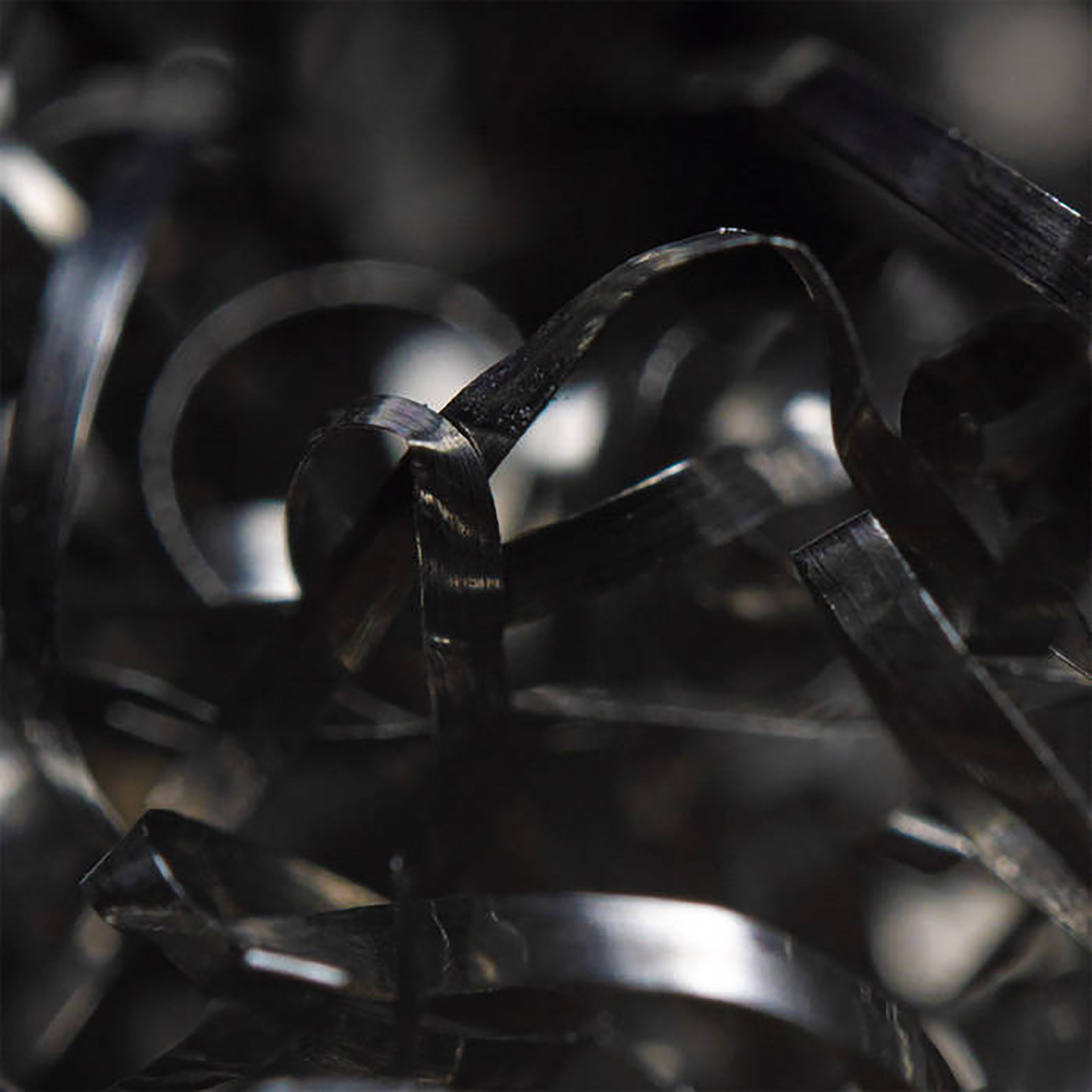 This is my first encounter with the unique fare of Berlin's One Instrument Records, but I have probably stumbled upon Felicity Mangan's work before, as she released an EP of animal-sourced sound art on Longform Editions back in 2019 and she is also half of the duo Native Instrument.  While it may sound like a stretch to call the multi-directional "quasi-bioacoustic sound piece" of her Longform EP Stereo'frog'ic "normal," it is nevertheless fair to say that frogs and homemade speakers are considerably closer to Mangan's comfort zone than a harmonica album (which is good, as I generally loathe harmonicas). And yet here we are: Bell Metal Reeds is an entirely harmonica-sourced album (Mangan picked one up at a flea market in Hamburg right before the pandemic). In most cases, learning that someone recorded a solo harmonica album over lockdown would—at best—elicit a wince, heavy sigh, or torrent of expletives from me, yet Mangan has somehow managed to wield the instrument so unconventionally and so beautifully that my mind has been properly blown. This is an incredible album, at times recalling everything from classic Kranky fare a la Windy & Carl to Neu! to Chris Watson.
This is my first encounter with the unique fare of Berlin's One Instrument Records, but I have probably stumbled upon Felicity Mangan's work before, as she released an EP of animal-sourced sound art on Longform Editions back in 2019 and she is also half of the duo Native Instrument.  While it may sound like a stretch to call the multi-directional "quasi-bioacoustic sound piece" of her Longform EP Stereo'frog'ic "normal," it is nevertheless fair to say that frogs and homemade speakers are considerably closer to Mangan's comfort zone than a harmonica album (which is good, as I generally loathe harmonicas). And yet here we are: Bell Metal Reeds is an entirely harmonica-sourced album (Mangan picked one up at a flea market in Hamburg right before the pandemic). In most cases, learning that someone recorded a solo harmonica album over lockdown would—at best—elicit a wince, heavy sigh, or torrent of expletives from me, yet Mangan has somehow managed to wield the instrument so unconventionally and so beautifully that my mind has been properly blown. This is an incredible album, at times recalling everything from classic Kranky fare a la Windy & Carl to Neu! to Chris Watson.
Happily, there is very little on this album that is recognizably sourced from a flea market harmonica, which is a good thing in my book. The even better thing is how transcendently Mangan was able to repurpose her Hohner Echo Harp's sounds and the impressive variety of compositions that resulted. The opening "Echo Harp 1" kicks off the album in especially sublime fashion, as the first half unfolds as sensuous, wobbly drone swells enhanced with flutters of dreampop shimmer that lazily swoop around the drones like an iridescent bat. It almost sounds like Mangan deconstructed drone music and somehow wound up with something languorously sensual instead. Curiously, Mangan opted to shift gears midway through the piece, so the final minutes are more akin to texturally confused drone metal than sexy harmonica ambient. I am bit disappointed by that transformation, as the first half was brilliant, but there is an eerie bent note in the final section that I like, so all is forgiven. "Echo Harp 2" is another big surprise, as it initially resembles an ancient war procession shrouded in a flickering psychedelic haze. Gradually, however, a throbbing drone slowly rolls out of the enchanted fog to launch a final act that resembles a stretched, smeared, and deconstructed motorik rhythm enhanced by the eerie whistle of a passing ghost train. While the first two pieces start off as near-masterpieces and end as merely very good, "Echo Harp 3" manages to sustain its perfection all the way to the finish line, resembling a wonderfully sensuous and spacey instrumental in the Windy & Carl vein (albeit a bit synthier-sounding than that comparison suggests). The album winds to a close with yet another surprise stylistic detour, as "Echo Harp 4" begins life as a pulsing mass of psych drone, but evolves into a compellingly polyrhythmic twist on a jangly drone rock band with an unusual effects palette. That adds up to four surprising, inventive, and beautifully crafted songs in a row, so I guess I am now a raging Felicity Mangan fan. If she can work this kind of magic with the insane constraint of exclusively using a flea market harmonica, her potential must be damn near limitless.
Samples can be found here.
Read More
- Duncan Edwards
- Albums and Singles
 On his first solo album since 2015, Duane Pitre takes figures/motifs from a "justly tuned" piano and uses his Max/MSP-based generative network to convert them into data which is then sent to two polyphonic microtonal synthesizers which have patches he designed. There is also some controlled improvisation interacting with the piano-reactive electronics. That may be clear to many readers, but it is impressively baffling to me. No matter, I often enjoy the benefits of things I don't fully understand: hydroelectric power, photography, bees making honey, and sound "living in the grooves" of vinyl records, to name but four. So it is with this lovely series of degenerative musical feedback loops. They also have a consistently pleasing sound and invite inner contemplation and a sense of interconnectedness.
On his first solo album since 2015, Duane Pitre takes figures/motifs from a "justly tuned" piano and uses his Max/MSP-based generative network to convert them into data which is then sent to two polyphonic microtonal synthesizers which have patches he designed. There is also some controlled improvisation interacting with the piano-reactive electronics. That may be clear to many readers, but it is impressively baffling to me. No matter, I often enjoy the benefits of things I don't fully understand: hydroelectric power, photography, bees making honey, and sound "living in the grooves" of vinyl records, to name but four. So it is with this lovely series of degenerative musical feedback loops. They also have a consistently pleasing sound and invite inner contemplation and a sense of interconnectedness.
The key to why Omniscient Voices pleases the ear may be “just tuning.” This is an important part of the debate about how music should be played and composed, along with the concept of the harmonic series. “Just" tuned music is associated with composers such as Harry Partch and Terry Riley, with calmness, introspection, slowness, and tranquility. It stands in sharp contrast to the compromised "equal temperament" tuning which has been accused of ruining harmony and causing Western culture to be deaf to the resulting action-oriented, bland, buzzing, colorless, over-caffeinated, out-of-tune happiness-fixated din. I think there’s something in that. Meanwhile, lovers of Pitre’s 2012 album Feel Free may experience OV as less of a long form work, but the harmonic variety does not result in any dilution of intensity or loss of “naturalness.” The pieces are clearly connected and there is no fragmented concession to post-modern aesthetics. The track titles suggest excavations of creativity and learning from the past. I am interested to know why track 4 is called "The Rope Behind The Bee" but it may not matter too much. There is no wrong way to approach this recording. By all means listen while trying to grasp the notion that in tuning theory 5/12 = 5/6 = 5/3 = 10/3 = 20/3, but the album is going to sound fine either way.
Read More
- Administrator
- Albums and Singles
Mere months after his Black Eagle Child full-length, Lobelia, appeared on Preservation, Milwaukee, Wisconsin-based Michael Jantz returns with Pages On A Plane, an equally satisfying twelve-inch vinyl outing for Under The Spire. It's modestly ambitious in scope, with thirty-six minutes of music split across the disc's sides and available in an edition of 250 copies on marbled vinyl. Outdoor field recordings bolster the music's natural feel, with Jantz creating luscious tapestries of picked guitar patterns whose clean lines register as cool and refreshing breezes; his is a music, in other words, free of lugubriousness or oppressiveness. The spaciousness expressed in “I Am A Bunny,” for example, can make one feel as if one is standing out in an open field breathing in the country air.
The opening track, “The Lost Button,” is one of the album's most appealing, as Jantz builds the individual layers into a sparkling web of quiet, sun-dappled radiance. During both “The Lost Button” and the second piece, “Spring,” Jantz generates a striking degree of contrast between the chiming guitar picking and e-bow-like accents that gradually emerge. Side B's “Long Reflector” cultivates a pastoral and dream-like mood with Jantz weaving the guitar parts into a gently pulsing whole, the cumulative effect rather like slivers of sunlight breaking through trees in a forest. The album's sole misstep arises during “Cycle to the Moon” where the presence of drumming conventionalizes the Black Eagle Child sound by anchoring it too solidly when it succeeds best when allowed to float freely. Even so, Jantz has built up an impressive catalogue of releases (many of them cassette-only) in three years' time, and Pages On A Plane is certainly a more than credible addition to his discography. Don't be misled by the achromatic cover photo: this is music rich with colour, whether it be autumnal yellow-oranges or leafy blue-greens. - Textura. August 2011
200 copies available on marbled vinyl on PVC sleeve from Under The Spire Recordings
http://www.underthespire.co.uk/releases-buy/black-eagle-child-pages-on-a-plane/
Read More
- Administrator
- Albums and Singles
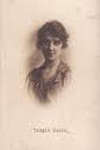 This offering on the altar of music is a mesmeric slow burner. It goes to work on me like a time released medication. Strains of flute, bells, and synthesizer swirls gradually encompass me, infecting my blood stream with their calmness, before the levels are elevated into a heady pulsating crispness. Temple Music is an offshoot project started by Alan Trench of the British dark folk band Orchis and an ex-proprietor of the now deceased World Serpent label. After his first Temple Music release he was joined by Stephen Robinson. Together, on this limited release of 300, (distributed by AntiClock Records in the US, purveyors of fine titles from Language of Light, Ctephin and others), they have created an immersive sound-world blending elements of ritualistic drone, string band like avant-folk, and moments of blistering krautrock assaults. There are four movements on the disc, mixed as one continuous hour long piece.
This offering on the altar of music is a mesmeric slow burner. It goes to work on me like a time released medication. Strains of flute, bells, and synthesizer swirls gradually encompass me, infecting my blood stream with their calmness, before the levels are elevated into a heady pulsating crispness. Temple Music is an offshoot project started by Alan Trench of the British dark folk band Orchis and an ex-proprietor of the now deceased World Serpent label. After his first Temple Music release he was joined by Stephen Robinson. Together, on this limited release of 300, (distributed by AntiClock Records in the US, purveyors of fine titles from Language of Light, Ctephin and others), they have created an immersive sound-world blending elements of ritualistic drone, string band like avant-folk, and moments of blistering krautrock assaults. There are four movements on the disc, mixed as one continuous hour long piece.
At the beginning of the first movement, "There Is No Light And I Cannot Get Out," a female voice announces "The fountainhead decays," but from my point of view this has nothing to do with the desultory works of Ayn Rand, unless it is a comment on the bankruptcy of her philosophy. The voice continues, at intervals throughout the disc, reading a poetic text in a voice suitable for a guided meditation. Not that her words aren’t enunciated with enthusiasm, just that dynamically they remain at a consistent volume and tone. Lisa and Tracy are given credit for the vocals, but they are blended with such skill I couldn’t tell one from the other.
Electric guitar pickings and a dense drone pull listeners in on their stream of consciousness meanderings, while a slow bass throb fills out the bottom end. Sprinkles of bells add a perfume of mystery which further emerges in the vaporous trills of a flute or recorder. I begin to get the sense that I am outside somewhere at night, perhaps near a secret grotto, or approaching a sacred grove: samples of crickets or other nocturnal insects oscillate between the left and right speakers, forming a murmuring foundation. Slow LFO sweeps and mournful arpeggio begin to susurrate as the movement fades out, the illustrious tour guide announcing I am "in a dream."
Synth and bells push things along again in "Your Children Are Our Future." This is the most sinister sounding part of the whole album. Doors creak, electronics crackle. The innocence of childhood is not so much present as is a host of adult fears and uncertainties. Eventually guitars and other plucked instruments return, as if to dispel the darkness which had been conjured. The music picks up speed in the raucous "House In The Snow." It still starts off ominous, the warbling electronic backdrop accompanied for a time only by the chittering insects. Drums, provided by Kosmicheboy, fill out the palette nicely at a time in the album that otherwise could have been boring, if the pace hadn’t changed. A sense of urgency is also finally emerging from the chords of the vocalist. Amidst all the myriad transformations and movements here, the lyrical recitation is a constant thread winding through the maze.
The last movement has the appropriate title "Soon Death Come." If the voices are a string, here that string become unraveled, slowly overwhelmed by majestic guitar chords and shimmering synthesizer, which leads outwards from the labyrinth of life, into the white light of death. In this setting, death isn’t scary, something to be feared, but a release, a letting go. Smatterings of a steam like hiss, or of train wheels grinding on the rails, seep towards the foreground at the very end, leaving the station, traveling off into unknown worlds.
samples:
 
Read More

